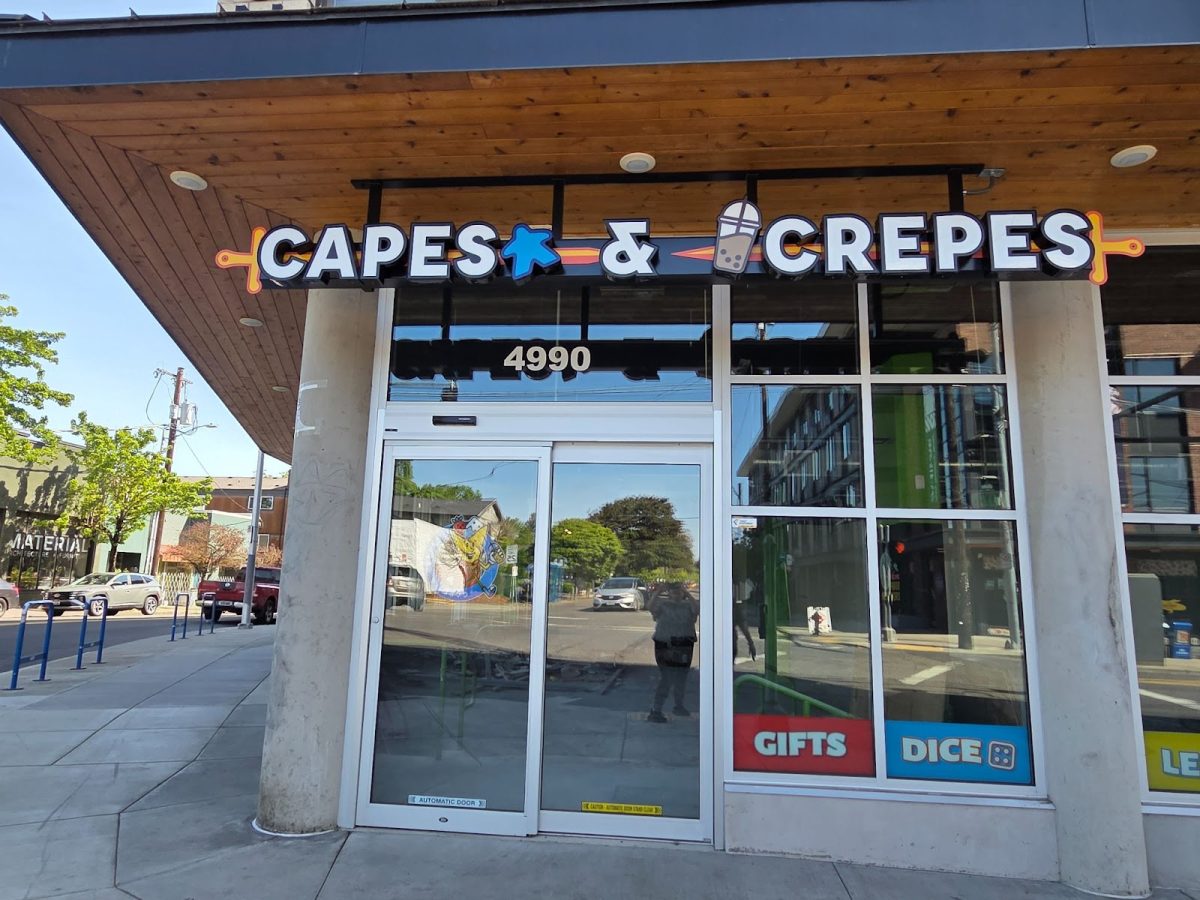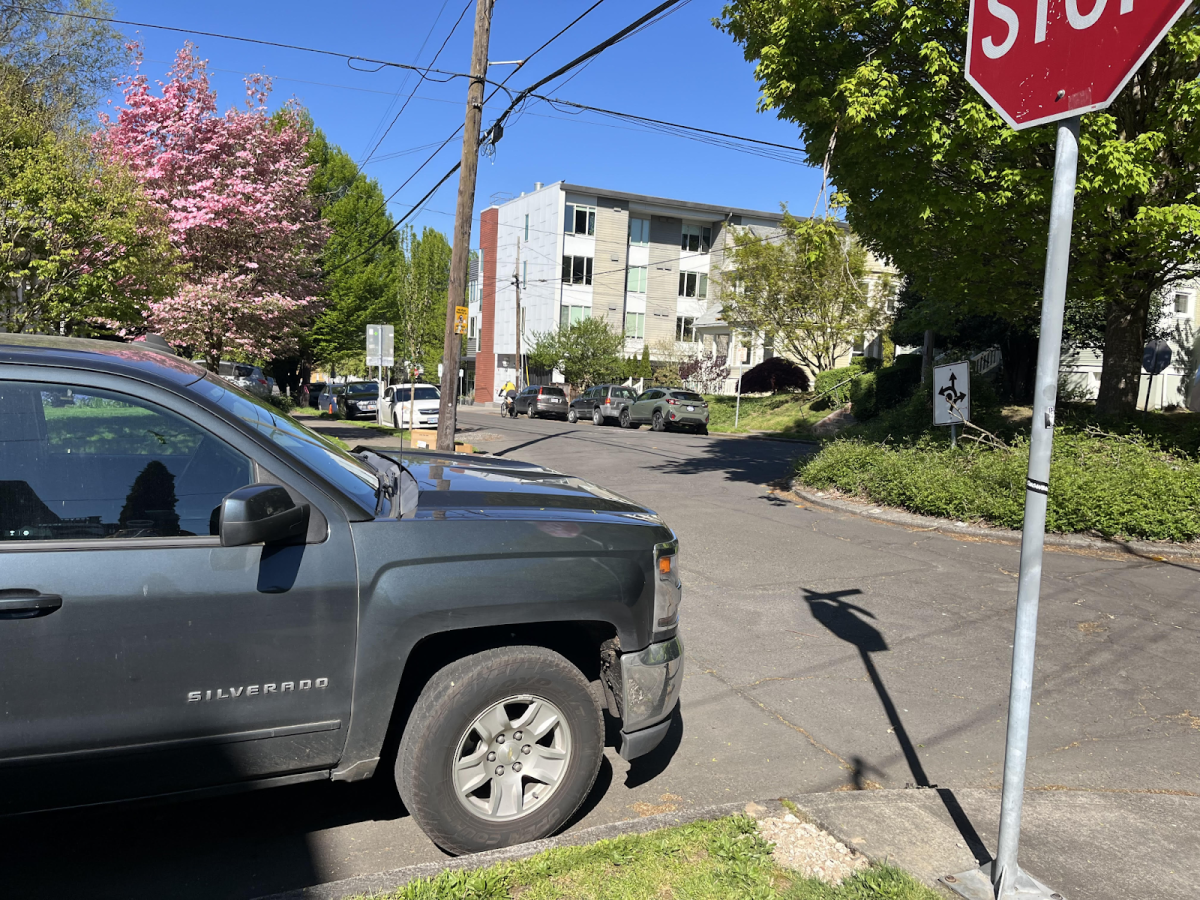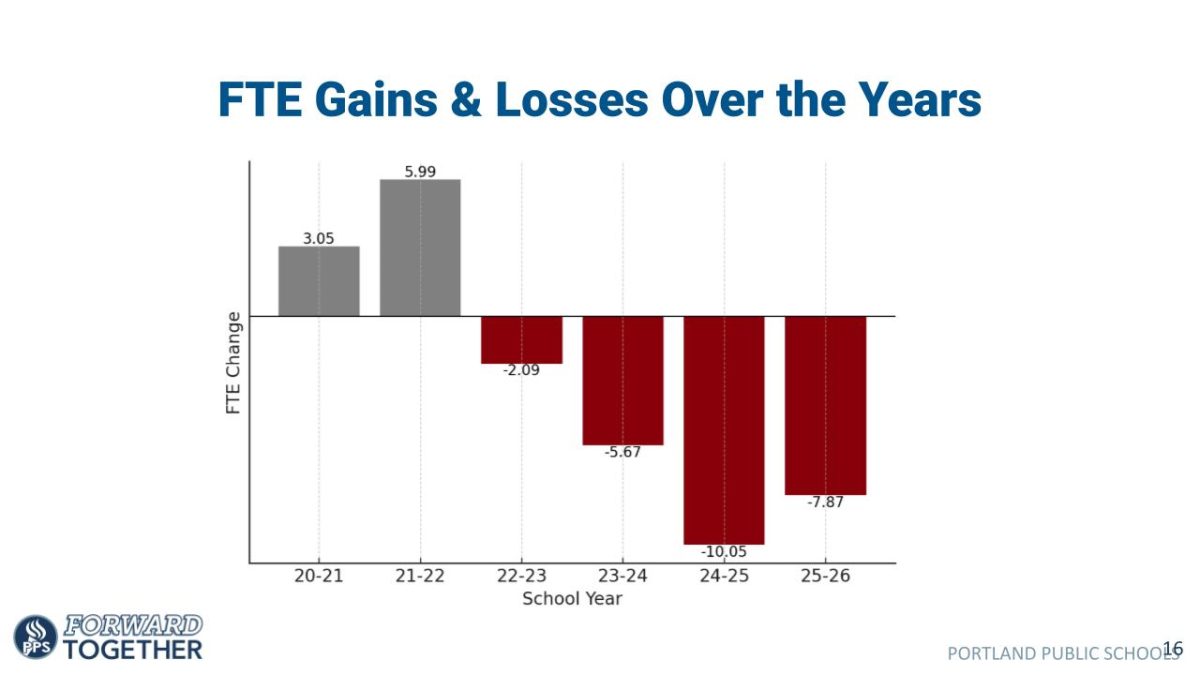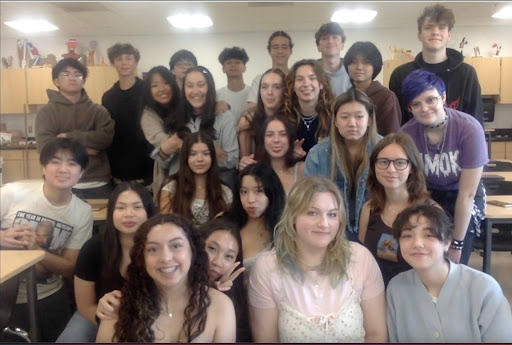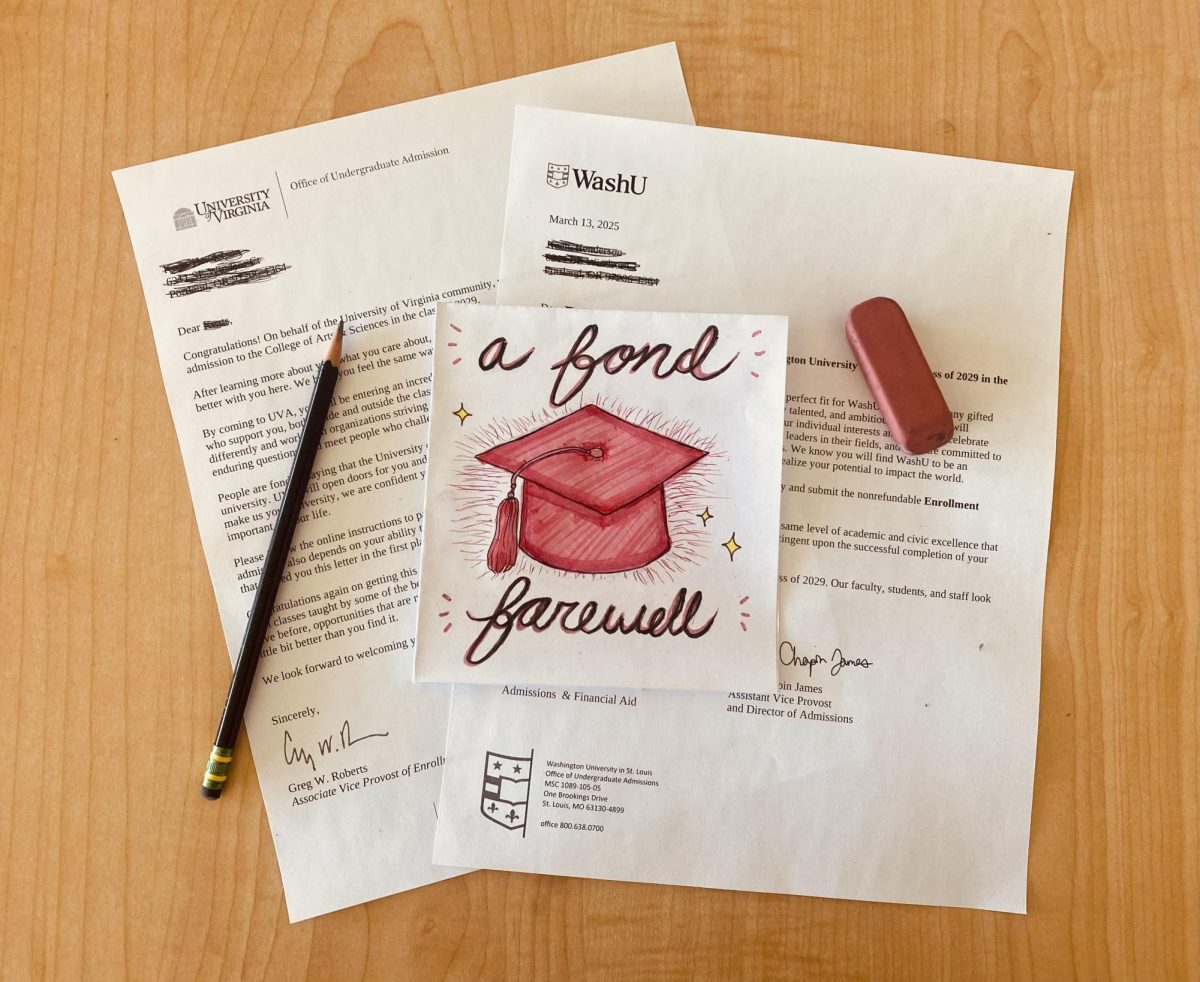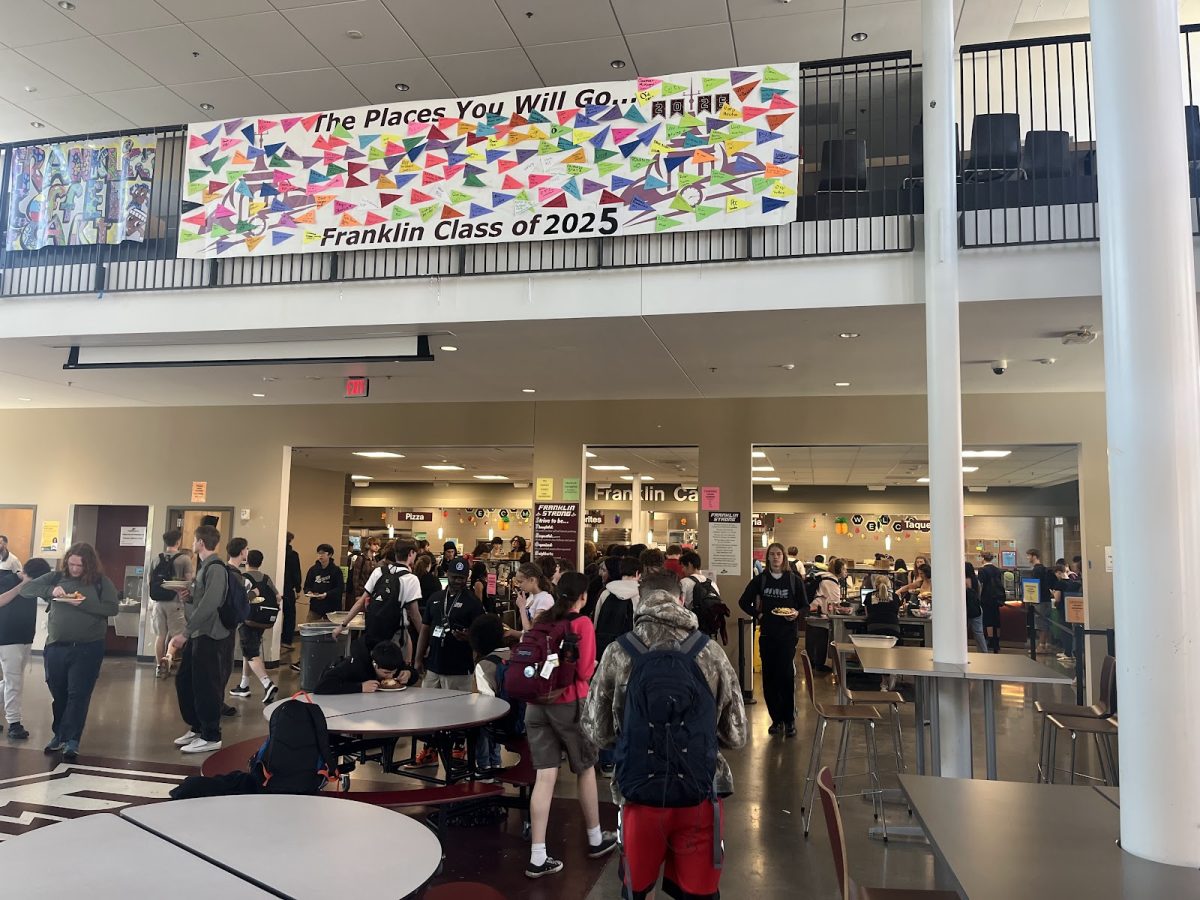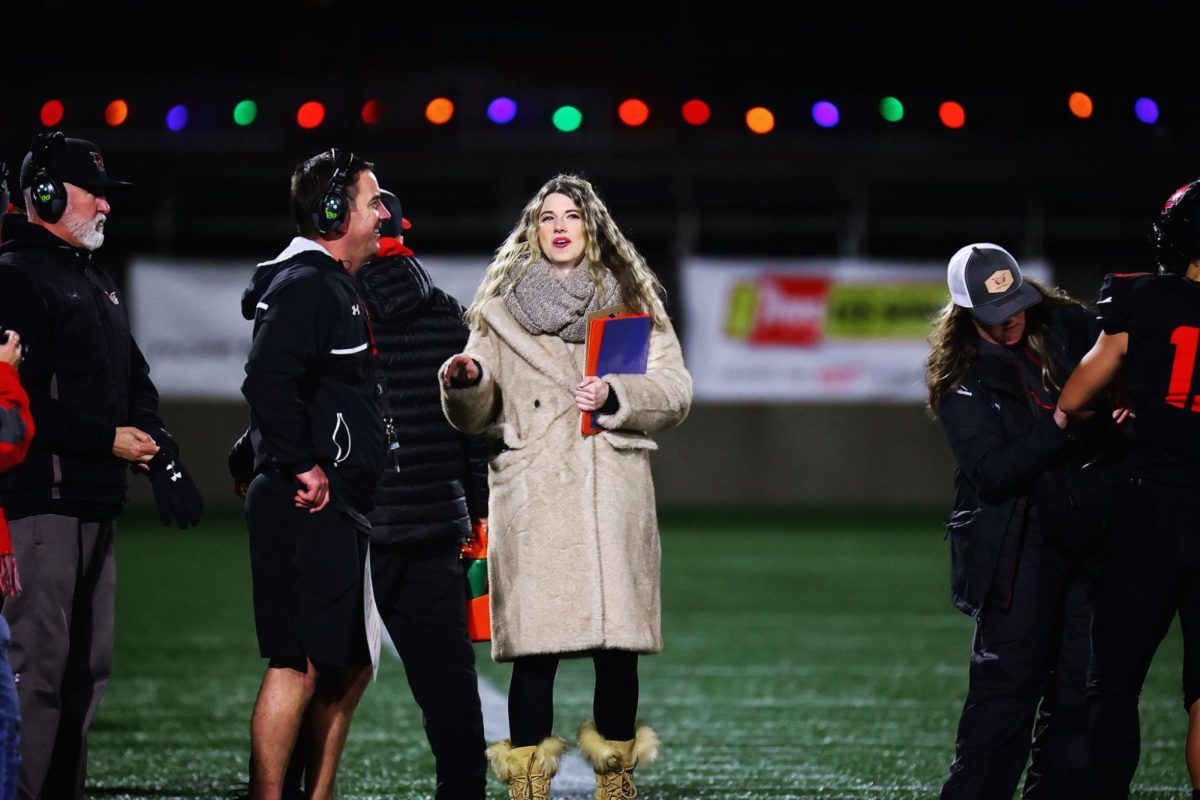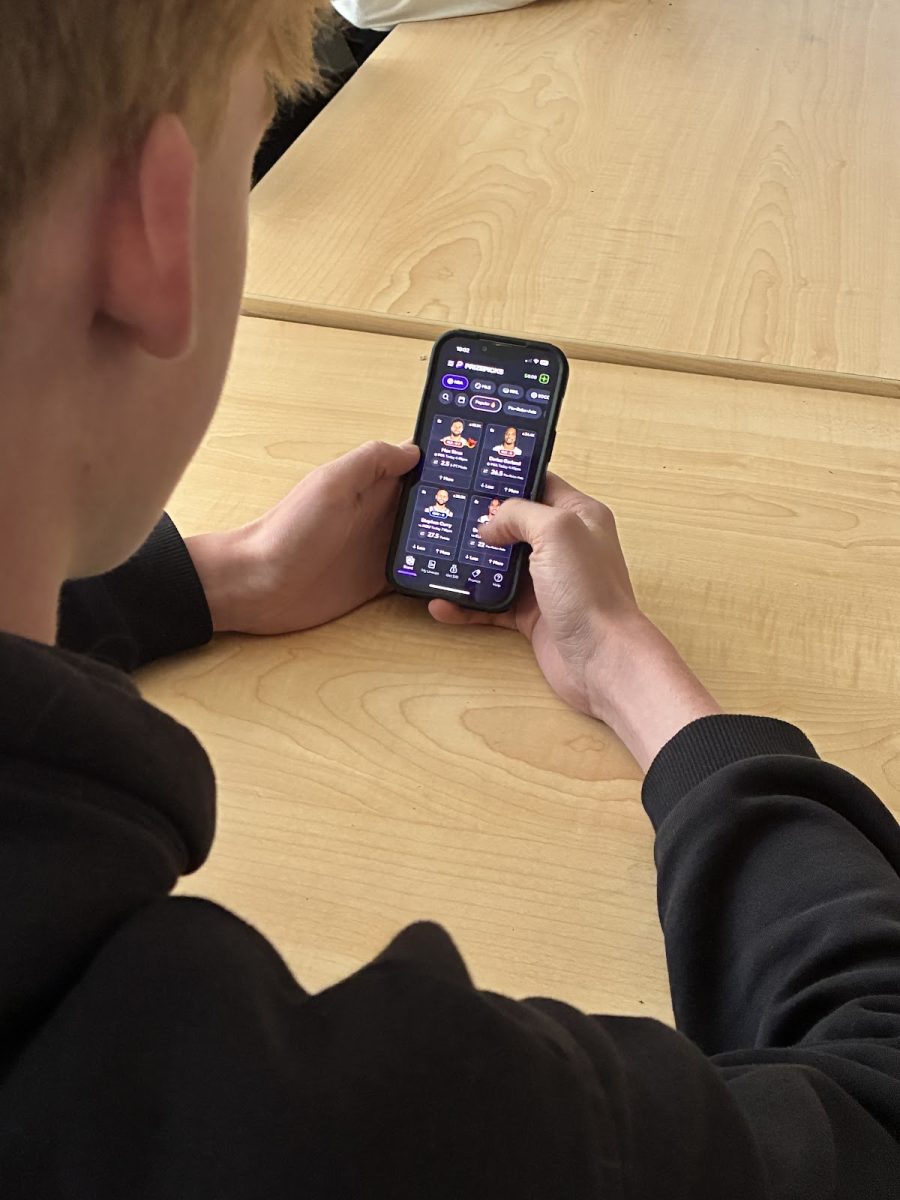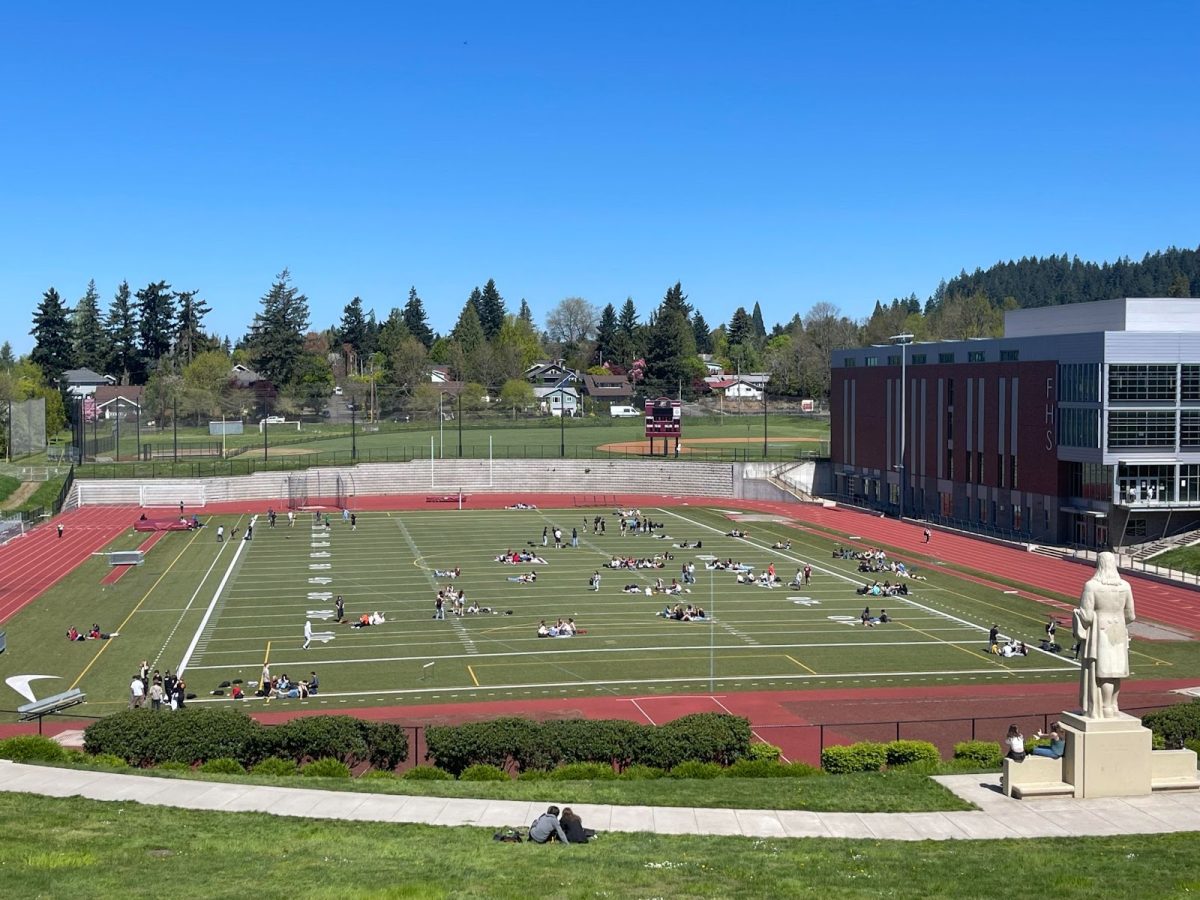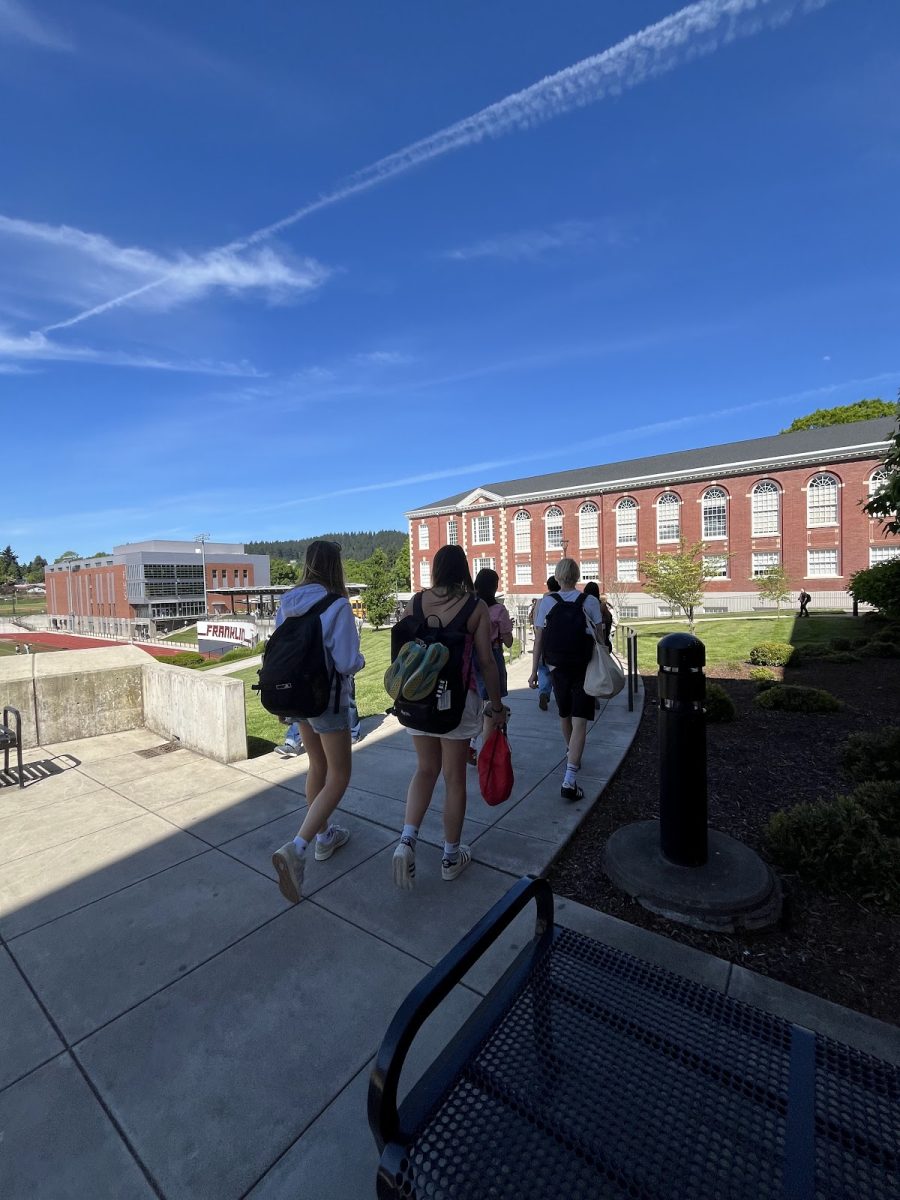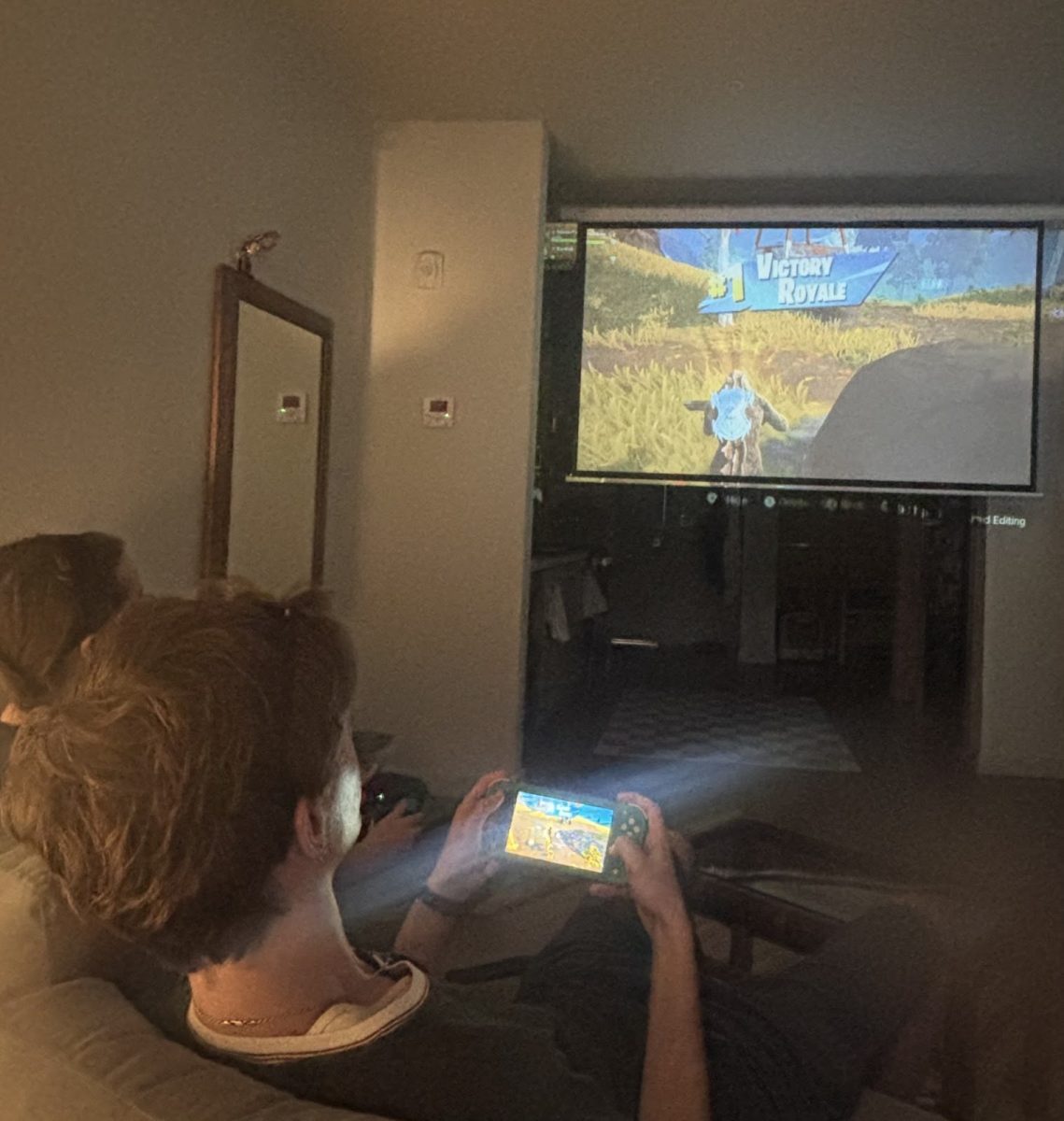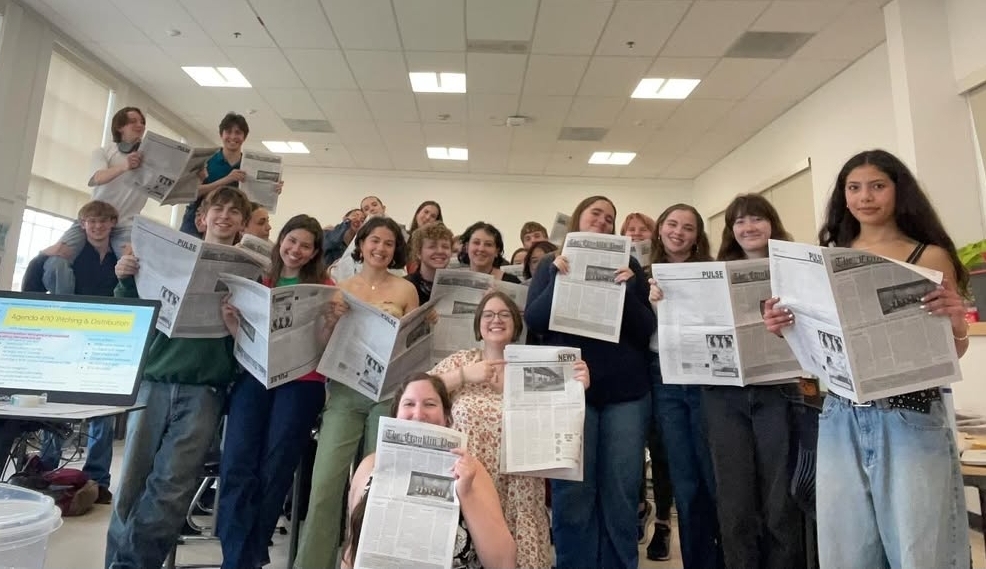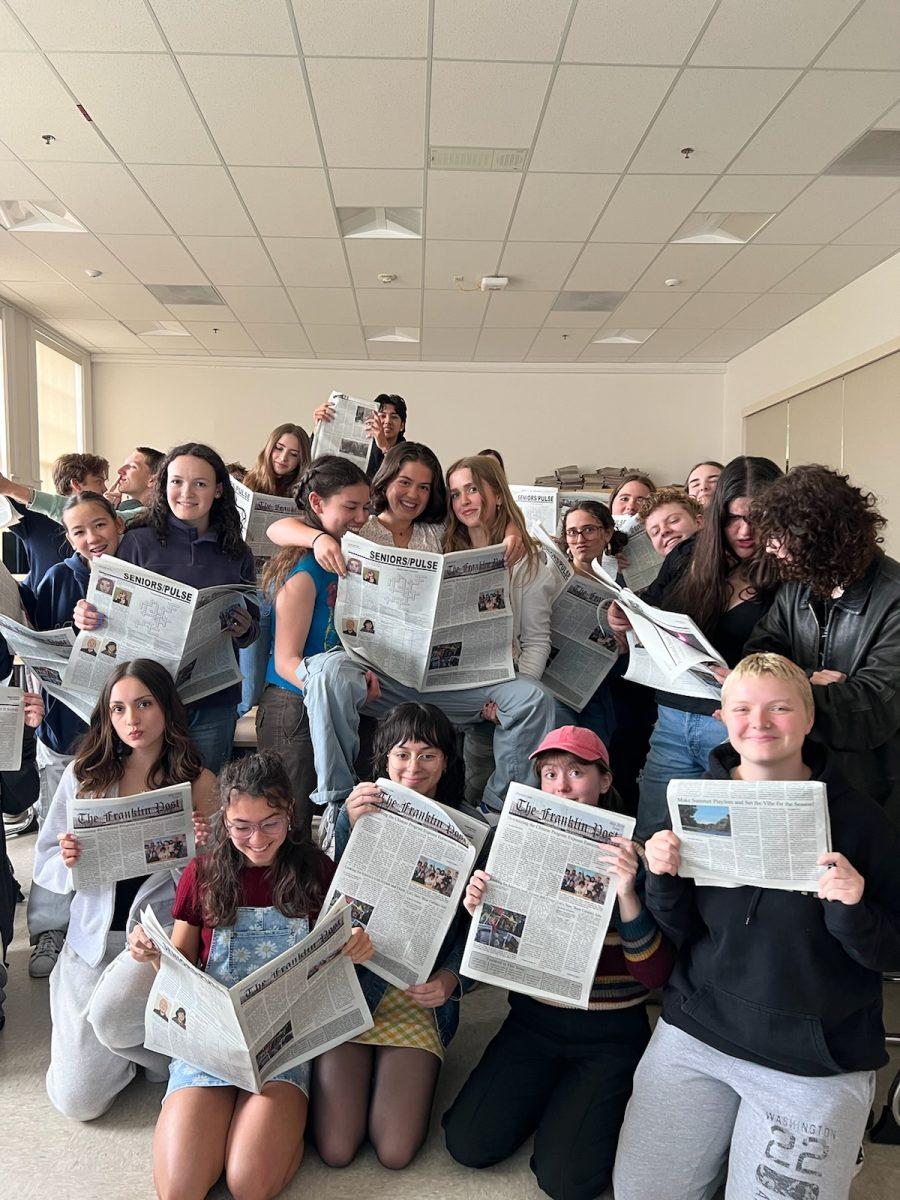When forecasting for sophomore, junior, or senior year, students are given the option to take Advanced Placement (AP) classes. Will you take Modern World History or AP World History: Modern? English 5-6 or AP English Language and Composition? Math in Society or AP Precalculus? But these choices aren’t given to freshmen. They get to select a foreign language and electives, but those are generally their only decisions. They can “double up” by taking two math classes in one year, but there is rarely an option for advanced physics or English. This leads to students with different levels of skill and confidence being put into the same class and taught the same material, which can be detrimental to both advanced learners and students who need extra support.
According to Anna York, the coordinator for the Talented and Gifted program at Franklin, “Most of our classes are meant for students who are kind of in the middle.” She explained that some kids are faster at picking up on new information or are coming into classes with existing knowledge of the subject. These students often aren’t given the intellectual challenge they need in freshman year when the focus is on easing the transition and making sure students don’t get overwhelmed. York said that sometimes, because of this, advanced students can “get so bored that they just stop, check out, or don’t do stuff anymore.”
AP classes could be a viable solution for advanced freshmen. They are fast-paced with a higher workload than the average class. They also allow you to gain college credits if you pass an exam at the end of the year. For students who want to accelerate their learning, APs are often the go-to option. However, these courses are not currently offered to freshmen, except in a few special circumstances.
This is because of the College Board, the organization that created AP classes. Yoshio Drescher, a learning acceleration instructional specialist at Franklin, who works closely with advanced classes, explained, “They have recommended prerequisites for their courses. … AP Biology, for example, they recommend that there are two years of high school science in biology and chemistry. So that’s a course that you really couldn’t offer in ninth grade.” Due to the recommended prerequisites, there are many classes, such as AP Biology, that most freshmen simply can’t take. However, adults around the school are working on plans to give freshmen the option to take certain AP classes that do not require prerequisites.
York said that she and Greg Garcia, another AP Psychology teacher, are “looking at an option for next year’s ninth graders. If they want to take AP Psychology as a freshman, they can apply to get in.” There would be an application to ensure that the students are mature enough to handle the concepts discussed in the class, some review near the start, and a pre-assessment to ensure they are academically ready. If done effectively, this is a great start toward giving freshmen who want harder classes the opportunity to take them.
Another option is to allow freshmen to replace a core class with an AP course. For example, physics is a core class where students have very different levels of experience and proficiency. This is due in part to the amount of concepts that overlap with things learned in Algebra 1-2. Brit Verissimo has been teaching ninth grade physics at Franklin for four years and said that “folks with Algebra 1-2 already done before they get to [high school have] a big advantage in ninth grade physics.” They already have an understanding of graphing and equation-solving, both of which are taught and used in physics. Adding to the gap is the fact that different middle schools cover different subjects in their science curricula. This means that some students may have already learned a lot of the course material for physics, but don’t have the credits to show for it.
Verissimo would be supportive of interested ninth graders with the right amount of math experience being able to go straight into AP Physics 1 because “[giving] ninth graders more input in their classes … can contribute to more engagement.” They added that it’s difficult for some students to remain engaged in classes when they simply don’t want to be there.
Even if this is implemented, the forecasting information shared by middle schools needs to be updated to ensure that students are given the proper information about class workload and advanced students are able to forecast for AP classes. When forecasting for Franklin last year, many eighth graders at my school were told by our middle school counselors that high school classes would be incredibly difficult. Our teachers would warn us about how eighth grade would be the last year without much homework. They also discouraged us from doubling up in math our freshman year because the workload would be too overwhelming.
However, this sort of information isn’t always true. According to Drescher, many middle school counselors are “worried that their students, when they get to high school, might take classes that are too hard for them, [but] a lot of that messaging isn’t really coming from [Franklin].” He encouraged eighth graders to do their own research about the difficulty of the classes they’re considering taking. On the school website, you can find forecasting guides and information “about student workload, so that students can get a sense of what that looks like and can choose for themselves.”
In addition, students need to be prepared in middle school to take APs, but sometimes students and their families can feel unsupported in achieving this. In middle school, my teachers and counselors told me multiple times that there was simply no way to get any further ahead in math since I was already taking Algebra 1-2 in the eighth grade. My family and I knew that it was possible because friends of ours had done something similar in the past, so we continued exploring options. Eventually, we found a program, Oregon Virtual Education, that would allow me to take Algebra 3-4 online. I was excited because it would give me additional work and the ability to be further ahead and take even more math classes in high school.
My counselor told us it was possible to take the course, but he discouraged it, saying, “Students who have participated in online programs don’t have the same level of skill as students who have their instruction scaffolded and supported by a teacher.” Although the class was virtual, there was still an online teacher who I could contact if I had any questions. Though taking a class in person may be better for some, this shouldn’t be used as a reason to deny a student resources to further their education if it is what they believe they need. Eventually, my principal signed off on the course, but we ended up having to pay for it ourselves, which was $400 per semester until the district eventually credited us back many months later.
Regarding advanced courses, York said, “The adult concerns are around equity, [making sure that] every student at every school within our feeder pattern [is] given those same opportunities.” But the current system that we have set up is not equitable. Equity means ensuring that everyone has access to the opportunities and resources that they need, including helping families of advanced students to support their students in furthering their learning. I was lucky to have a supportive family, the right connections, and the ability to afford the program, but so many others aren’t as fortunate.
Another equity concern is that offering advanced options to freshmen where they are placed into different classes according to ability level is akin to a process known as educational tracking. According to the National Association of Secondary School Principals (NASSP), “The term tracking refers to a method used by many secondary schools to group students according to their perceived ability, IQ, or achievement levels. Students are placed in high, middle, or low tracks in an effort to provide them with a level of curriculum and instruction that is appropriate to their needs.” Many studies have found that tracking is detrimental to students in low or middle tracks because, as the NASSP said, “instructional methods tend to be more engaging, reflective, and challenging in high tracks, whereas low tracks emphasize good behavior and menial skills.”
In my opinion, offering APs to ninth graders is not the same thing as tracking. Tracking can make it difficult for students to get out of the low tracks once they are placed there. However, whether or not a student takes an AP class as a sophomore, junior, or senior is entirely their decision. Someone who was in a lower level of science or math as a freshman can still choose to double up in that subject the following year, which will bring them up to a higher level. Allowing students to choose what level of a class to take in future years also means that the difficulty and amount of work that they are getting is up to them, and in my experience, students having input on their workload can increase classroom engagement.
However, some teachers believe that freshman classes are difficult enough, so there isn’t a need for more advanced options. Stephanie Satoorian is a Franklin physics teacher who believes ninth graders don’t have easy classes. “Many classes offer honors options for students, and I do think the workload for ninth graders is fair and reasonable.” She stated, “We don’t want to overwhelm ninth graders, because they have so many new things they are experiencing their freshman year.” This is one reason for the community system, where students are divided into groups and given the same teachers for all of their core classes.
Satoorian and Drescher mentioned honors assignments as an alternative to more advanced classes, but these don’t provide the same extra work as AP courses. My English honors work is reading three books every semester, writing a short report on each of them, and then presenting those to my teacher. For physics, there are several options, including watching a lecture on a scientific topic or interviewing a family member who works in a scientific field. Math honors is volunteering your tutorial time to help your peers with their work. These options give students slightly more work to do outside of school but don’t generally make their existing classwork any harder.
Our school district needs to have better options for advanced students, whether they are fast learners or students who already have a good grasp of the material. There are many options for students past ninth grade, but very few for middle schoolers and freshmen. This means that families have to be incredibly persistent to access resources that should be offered to their kids. While offering certain AP classes to freshmen isn’t a perfect solution and can be difficult to coordinate due to the number of feeder schools and class prerequisites, it is possible. This would help ensure that all students are given the education they need.
